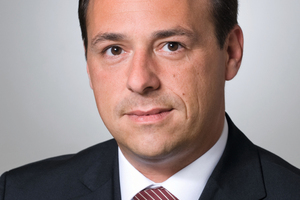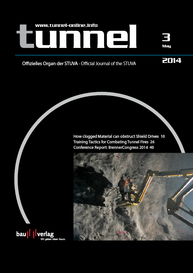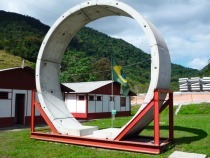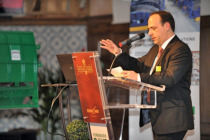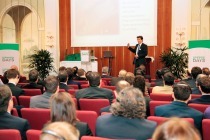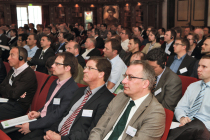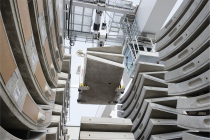Segment Production 3.0:
fit for the Future
The development of tunnel boring machines is an industrial high-tech sector that also stimulates high quality and even groundbreaking new methods in the field of concrete formwork and tunnel lining. The high demands on the quality of tunnels and the growing complexity at the jobsites play their parts in pushing developments in the field of segment production. In addition to technical innovations, manufacturers of segment production equipment can meet increasing expectations especially with customized or turnkey solutions.
Market Trends in Formwork Production
In order to optimally plan an integrated solution for the customer it is essential to look beyond ones own core capabilities: the manufacturers of segment production equipment must be aware of what’s going on in the industry in addition to their own delivery and service programme. That is the only way to see their innovations applied in tunnel construction.
Guiding rods, connecting dowels and universal rings are examples for various design-, material- and production-related innovations, which were only applied individually a few years ago but are used ever more frequently nowadays. The application of fibre-reinforced concrete for projects posing moderate bending and tensile loads is becoming increasingly popular. Modern data management systems, with the aid of which all activities and sequences on the construction site can be monitored, controlled and optimized also reveal great potential.
Stationary or Carousel Production –
a project-specific Choice
Months before the first segment is produced, the appropriate production method is determined by the involved parties. Two manufacturing processes have established themselves on the basis of growing demands on precision and efficiency: stationary and carousel production. A large number of parameters codetermine the choice of type of production. A carousel system makes sense if high labour costs, lengthy production periods, constricted space conditions or possible reutilization of the equipment are involved. The production output highly depends on the particular limiting factors. On average carousel systems achieve an output of 2 -2.5 utilizations per day.The average output of the stationary production is 2 segments daily. Under advantageous conditions some productions have attained an average of up to 3.25 utilizations per day.
Choosing the right manufacturing method, based on thorough investigation and evaluation, is the foundation for reliable and economic segment production.
But how can the quality demands on segments be defined and transposed to the requirements posed on the equipment? As different regulations relating to segment and formwork tolerances exist throughout the world, the DAUB (German Tunnelling Committee) has worked out new recommendations for segment design. They also include recommendations relating to tolerances, measuring methods, measurement frequencies etc. 3D surveying, which was not regarded to be the best available technology up until a few years ago, has in the interim emerged as standard practice, however, mainly with respect to formwork surveying. This may have to do with the fact that there is still no international standard relating to the nature of the measuring method, the evaluation algorithms or the measurement frequency. Nonetheless, projects such as the Koralm Tunnel (contract section KAT2) indicate that highly precise segments and lasting accurate formwork units are actually feasible.
In Future
Specific developments in conjunction with application have been focused on by equipment manufacturers for some time alongside technical optimizations on the production side. A particularly interesting product, in keeping with the times is the energy segment. In such a case absorber pipes are located in the segments, which extract or transfer rock or tunnel heat via the tunnel shell. During the installation of the segments they are joined to form a circuit and attached to a thermal pump. This way the geothermal energy can be used to heat the tunnel or any other external building during winter and to cool them in summer.
A major aspect in product development are segments with in-liners. They enhance the sustainability of the tunnel (mostly the concrete’s corrosion resistance) while reducing the required number of working steps. The new Combisegment-Generation by Herrenknecht Fomwork for example is equipped with an integrated sealing system, which allows for constructing water, sewage or cable tunnel in a single work step.
All in all, the suppliers of segment production equipment are fit for the future, if they can provide their customers with efficient and technically mature solutions, specific to the project and with a reliable high level of quality. Moreover our industry sector can contribute to treating the resources we have available in a gentle fashion.

